- Why Look for Tweets Archives?
- Method 1: Using TweetArchive.org
- Method 2: Using X (Twitter’s) Advanced Search
- Method 3: Wayback Machine (Archive.org)
- Method 4: Archive.is (also called archive.today)
- Method 5: Ghostarchive
- Method 6: Manual Saving and Screenshots
- Practical Tips for Using Tweet Archives
- Comparing the Main Methods
- Final Thoughts
Tweet archives are important because they allow us to recover deleted tweets and revisit real posts that may hold remarkable importance. Tweets can vanish in an instant whether deleted by the author, hidden behind privacy settings, or simply lost in the endless flood of new posts.
That’s why having a reliable archive matters. It gives researchers, journalists, marketers, and ordinary users the ability to look back in time, recover deleted X (Twitter) posts, and safeguard digital conversations.
Whether you’re searching for your own old tweets, verifying a public figure’s statements, or studying the historical context of online discussions, there are practical methods to access past or deleted content.
In this guide, we’ll go through step by step strategies, including TweetArchive, as well as alternatives like the Wayback Machine, Ghostarchive, and Twitter’s built in search functions.
By the end, you’ll have a clear roadmap for retrieving tweets even those long deleted or buried deep within a timeline.
You might be interested in read our other article: Twitter Card Validator
Why Look for Tweets Archives?
Before diving into the methods, it’s worth understanding why someone might need to retrieve old tweets:
- Journalistic research: Reporters often revisit statements made by public figures to provide context or accountability.
- Personal history: Many users want to revisit their first posts or recover memories from years ago.
- Legal or academic reasons: Tweets are sometimes used as evidence in cases or cited in studies.
- Fact-checking: Deleted posts often reveal inconsistencies between what was once said and what is being claimed now.
- Digital preservation: Social media forms part of our cultural memory, and archiving it helps retain that history.
Whatever the reason, the methods below will give you several strategies to access past content.
Method 1: Using TweetArchive.org
The most straightforward tool for accessing deleted or historical posts is TweetArchive.org. This free resource is built specifically for browsing public tweet history, and it provides access to multiple archival databases.
Step 1: Go to TweetArchive
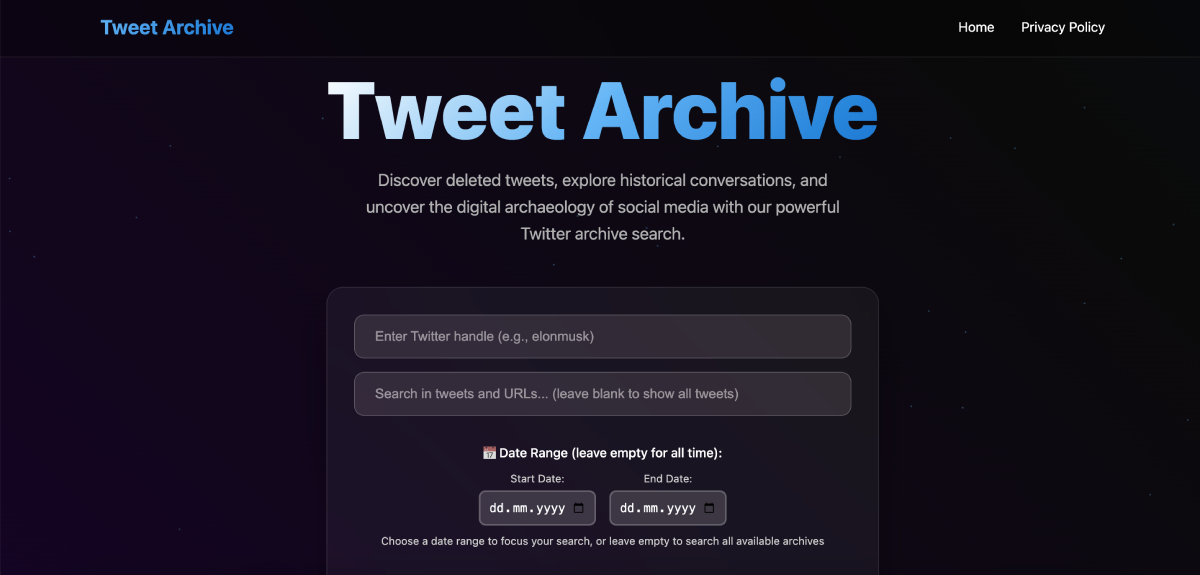
Open your browser and head over to the Tweetarchive.org. The homepage has a an input to put Twitter or X handle and any keyword or URL that you want to find. After that there is a Data Range field to place the dates that you are looking for that certain info.
Step 2: Enter the Account or Tweet Details
Type in the handle (for example, username without @) and search for a specific keyword or let it blank.
Step 3: Browse the Results
TweetArchive.org aggregates results from several different archival sources:
- Wayback Machine (Archive.org)
- Archive.is
- Ghostarchive
This means if one source doesn’t have the tweet you’re looking for, another might.
Step 4: Filter and Refine
You can filter results by date or content type. For example, if you know a tweet was posted in 2015, you can narrow your search to that period.
Advantages of TweetArchive.org:
- Free and easy to use
- Combines multiple archive sources in one place
- Works even for deleted tweets (if they were captured before deletion)
- No login required
Limitations:
- Only shows tweets that were archived at some point; if no snapshot exists, the tweet is gone for good.
- Does not work for protected or private accounts.
If you need an all-in-one solution, this is the best starting point.
Method 2: Using X (Twitter’s) Advanced Search
While archives are excellent for deleted posts, sometimes you’re simply trying to locate an old tweet that still exists. Twitter’s own Advanced Search feature is surprisingly powerful for this.
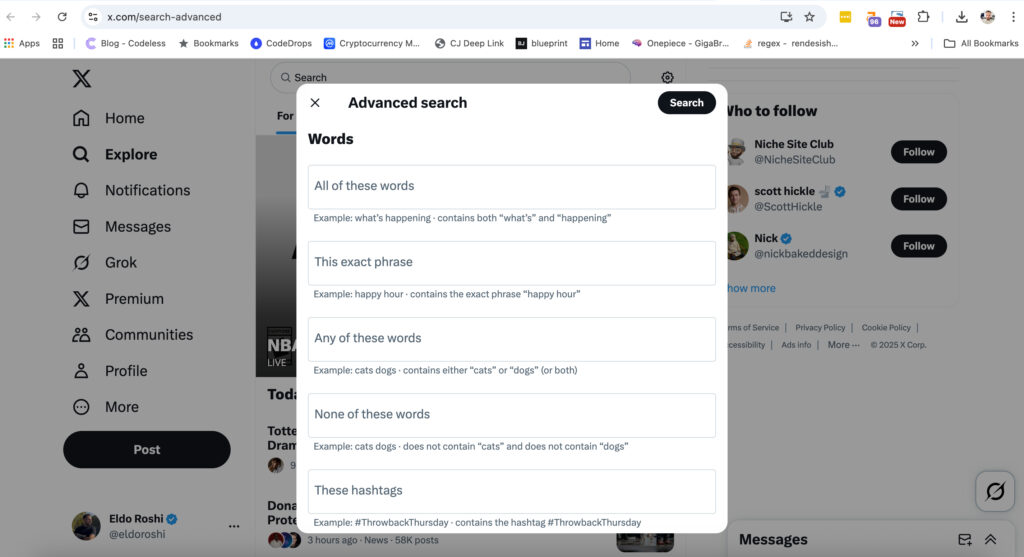
How to Use Advanced Search:
- Go to Twitter Advanced Search.
- Enter specific words, phrases, or hashtags.
- Use the “From these accounts” field to search within a particular user’s history.
- Narrow down by dates. For example, if you want tweets from January 2018, enter that range.
Example:
If you want to find a celebrity’s comments about a movie during its release year, you can search:
- From:
@celebrityhandle - Keywords: movie title
- Dates: January–March 2019
Pros:
- Great for existing tweets.
- Offers detailed filters (date, language, account, hashtags).
- Directly integrated with X or Twitter.
Cons:
- Won’t retrieve deleted posts.
- Requires patience when working with large accounts that tweet frequently.
Method 3: Wayback Machine (Archive.org)
The Wayback Machine is the oldest and most widely known web archiving tool. It has billions of snapshots of web pages, including Twitter profiles and individual tweets.
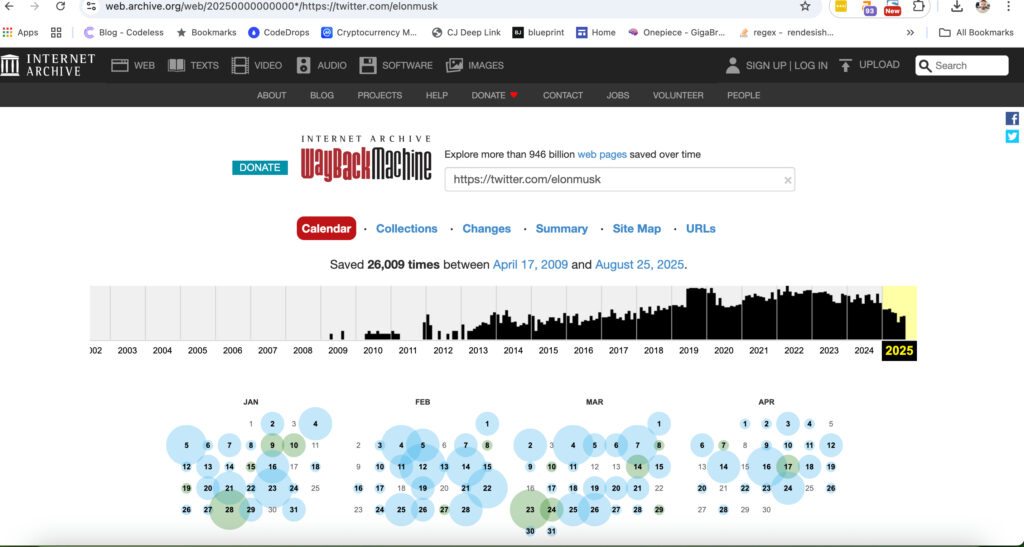
Steps to Use Wayback Machine:
- Visit archive.org/web.
- Paste the URL of the tweet or the user’s profile page (e.g.,
https://twitter.com/username). - Browse the timeline of snapshots. Each blue dot represents a saved version.
- Click on a snapshot to see how the page looked on that date.
Example:
If a politician deletes a controversial post, you can search their profile URL and check archived versions from the date range when it was posted.
Advantages:
- Reliable and widely used.
- Captures not just tweets but entire profile pages.
- Free and accessible to anyone.
Drawbacks:
- Snapshots are not continuous; you only see what was captured.
- Some pages may not have been archived at all.
Method 4: Archive.is (also called archive.today)
Another useful tool is Archive.is, which preserves pages in a lightweight format. Unlike Wayback Machine, which captures the entire page history, Archive.is usually saves specific pages on request.
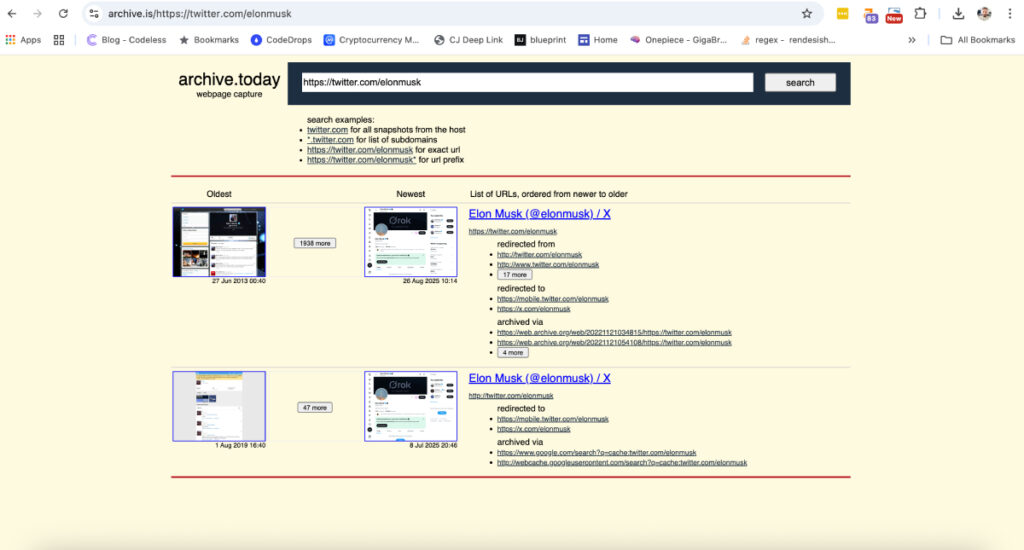
How It Works:
- Go to archive.is.
- Paste the URL of a tweet or profile.
- If it has been saved before, you’ll see past versions. If not, you can archive it right away.
This is particularly useful if you want to make sure a tweet is preserved before it gets deleted.
Benefits:
- Saves a “screenshot-like” version that won’t change.
- Loads quickly because it strips unnecessary elements.
- Useful for legal or journalistic preservation.
Limitations:
- You need the direct URL to archive a tweet.
- Doesn’t automatically crawl Twitter; relies on users to save pages.
Method 5: Ghostarchive
Ghostarchive is another alternative often used by researchers and internet sleuths. Unlike Wayback or Archive.is, Ghostarchive is optimized for social media preservation.
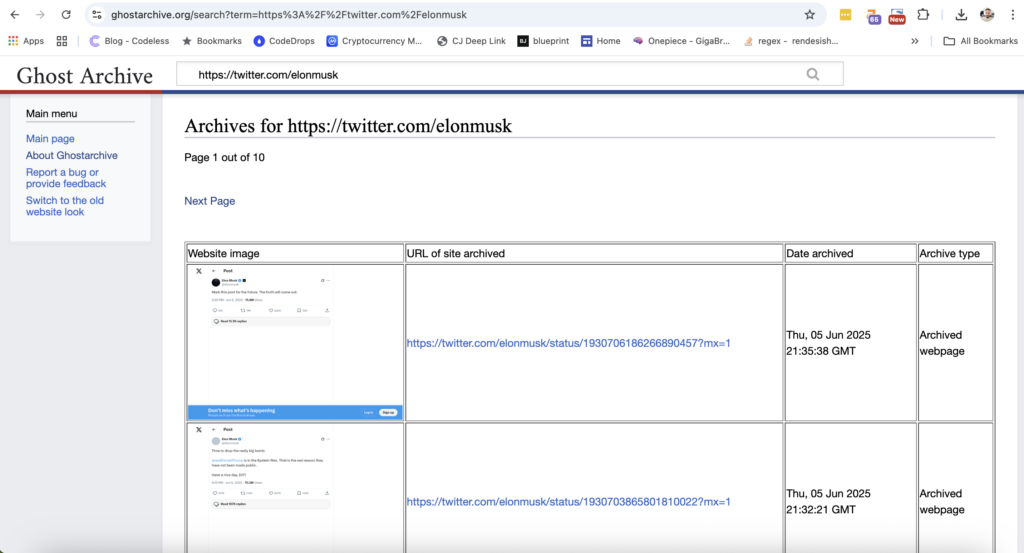
Using Ghostarchive:
- Go to https://ghostarchive.org/.
- Enter the tweet URL or account link.
- Browse past captures if they exist.
Why Ghostarchive Stands Out:
- Designed with social media in mind.
- Can preserve videos, images, and media attachments that other archives sometimes miss.
- Free to use.
Method 6: Manual Saving and Screenshots
Sometimes, the simplest way to preserve a tweet is just to take a screenshot. While this won’t help if you’re trying to recover something that’s already deleted, it’s a proactive strategy for future needs.
You can also use browser extensions or automated tools to save tweets periodically, especially for accounts you expect might delete content often.
Practical Tips for Using Tweet Archives
- Act quickly: Once a tweet is deleted, it may take time for archives to capture it—if they do at all.
- Use multiple tools: If you don’t find something on Wayback Machine, check Archive.is or Ghostarchive.
- Save proactively: If you think a post might be controversial or likely to be deleted, archive it yourself immediately.
- Respect privacy: Be mindful when dealing with personal or sensitive content. Archiving is legal for public posts, but ethical considerations still apply.
Comparing the Main Methods
| Method | Works for Deleted Tweets? | Best Use Case | Cost |
|---|---|---|---|
| TweetArchive.org | Yes (if archived) | One-stop solution with multiple archives | Free |
| Twitter Search | No | Finding old but existing tweets | Free |
| Wayback Machine | Sometimes | Historical profile snapshots | Free |
| Archive.is | Yes (if saved) | Quick preservation and lightweight snapshots | Free |
| Ghostarchive | Yes (if saved) | Social media–focused archiving | Free |
| Screenshots/manual | Preventative only | Personal record-keeping | Free |
Read more: Best Instagram Profile Picture Size in 2025: A Guide
Final Thoughts
In today’s digital environment, tweets may come and go, but archives ensure they’re not lost forever. The Tweet Archive approach, especially through platforms like TweetArchive.org, provides an essential way to revisit and recover online history. For anyone doing research, fact-checking, or just looking back at their own posts, these tools are indispensable.
By combining methods Twitter’s advanced search for existing posts, the Wayback Machine for old profile snapshots, Archive.is for quick preservation, and Ghostarchive for social media archives you’ll have a comprehensive toolkit for exploring the past.
The internet may never forget, but it sometimes needs a little help remembering. With these resources, you’ll always have a way to bring deleted or historical tweets back to light.
As one of the co-founders of Codeless, I bring to the table expertise in developing WordPress and web applications, as well as a track record of effectively managing hosting and servers. My passion for acquiring knowledge and my enthusiasm for constructing and testing novel technologies drive me to constantly innovate and improve.
Expertise:
Web Development,
Web Design,
Linux System Administration,
SEO
Experience:
15 years of experience in Web Development by developing and designing some of the most popular WordPress Themes like Specular, Tower, and Folie.
Education:
I have a degree in Engineering Physics and MSC in Material Science and Opto Electronics.





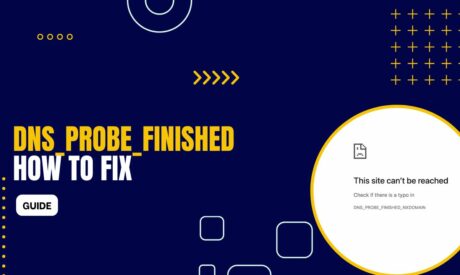



Comments